

Matt Campbell
2025 Porsche 911 Carrera T review
5 Days Ago
I've always been a 911 diehard, but what Porsche has done with the 2021 Panamera GTS lies close to engineering perfection.
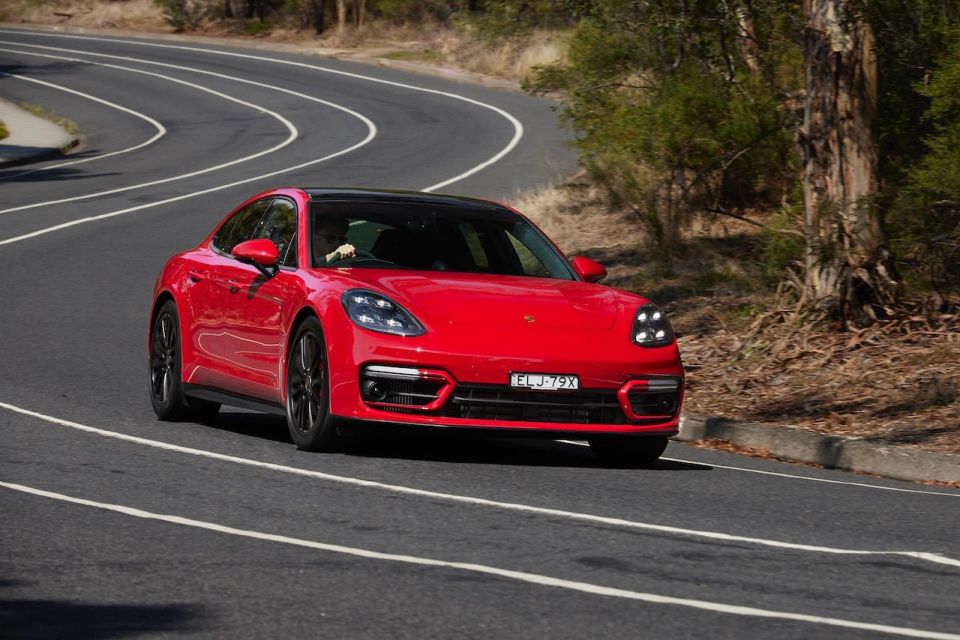
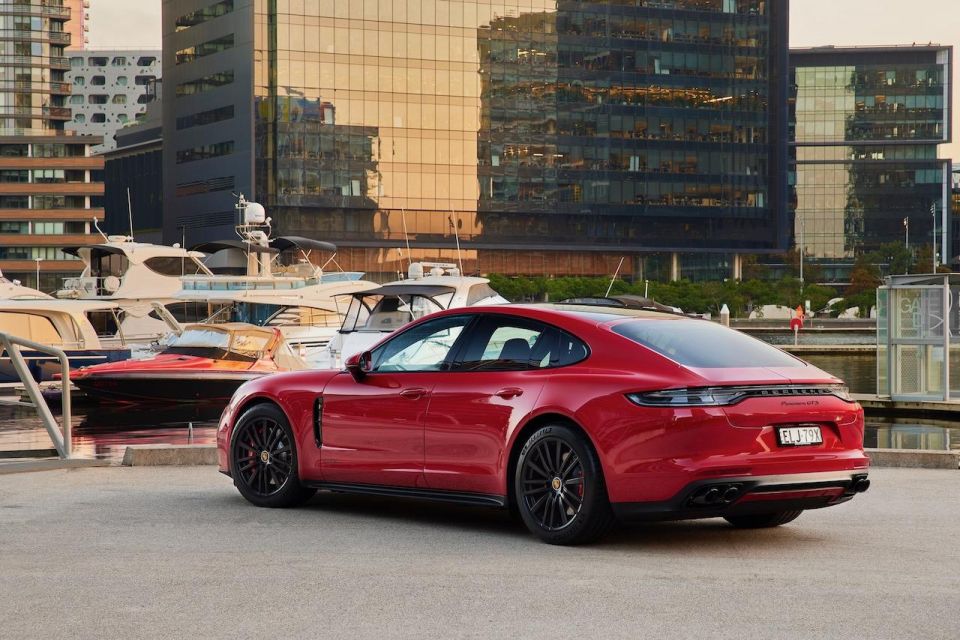

Senior Road Tester
New from
$199,500
excl. on-roads

Senior Road Tester
New from
$199,500
excl. on-roads


Senior Road Tester
New from
$199,500
excl. on-roads

Senior Road Tester
New from
$199,500
excl. on-roads
Quickly see how this car stacks up against its competition. Select any benchmark to see more details.
Where expert car reviews meet expert car buying – CarExpert gives you trusted advice, personalised service and real savings on your next new car.
The moment you climb in and get seated in the latest 2021 Porsche Panamera GTS’ Alcantara sports buckets and take the obligatory nine-and-three hand positions on the similarly-wrapped steering Porsche steering, it feels no different to a 911.
Next, you turn the faux key fob and the Panamera GTS barks to life, before settling down into a satisfying idle with intent from its twin-turbo V8.
It’s clearly a more visceral tone than I can recall from the previous version.

We’re on the way to The Bend Motorsports Park from Adelaide Airport, and we’re not using the M1. Instead, we’re taking a more challenging back route full of narrow twisties.
This should provide a properly wide canvas for a complete assessment of the Panamera’s GTS upgrades.
I’ve never been a big fan of Panamera’s design language. A bit too bulbous, and nowhere near as proportionally sound as the rest of the Porsche stable.
The latest version is a bit different, with inspiration from the strikingly beautiful all-electric Taycan. There’s a new Sport Design front end with larger side cooling openings and a single light bar, while down back the light strip is continuous between the revamped darkened LED tail lights.

Finally we have a handsome Panamera, but it took a while.
There’s no dodging Panamera’s full-sized dimensions, at more than 5m long and 2m wide. But the Panamera GTS will simply blow you away once you hit the road.
If you thought the previous Panamera GTS was a capable thing (it was), the new version dials up the whole driving experience – which begs the question, is this the Panamera we should have had from the very outset?
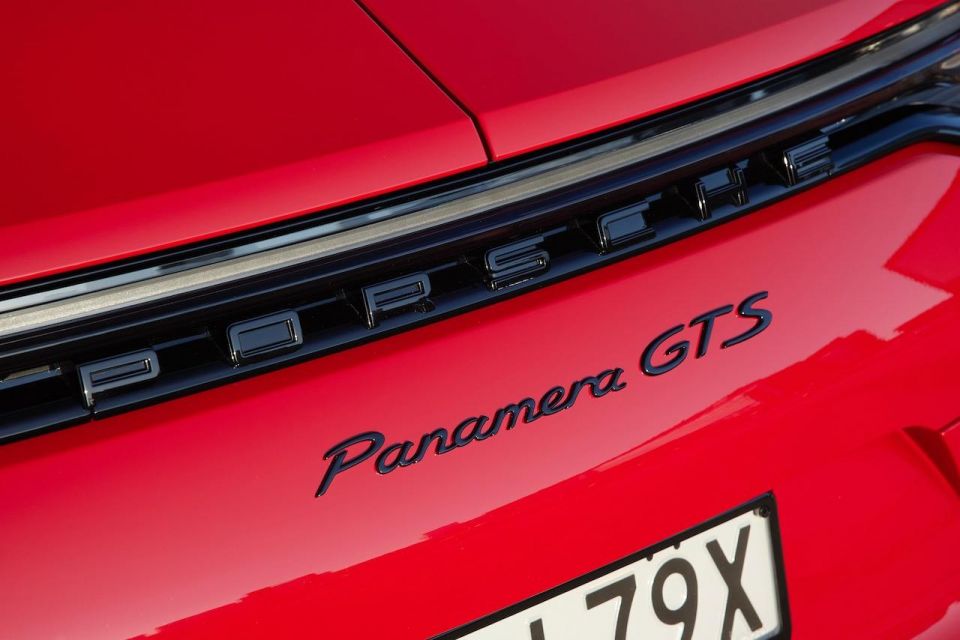
A whopping $309,500 before on-road costs is what the Panamera GTS will set you back.
That’s a hefty $110,000 premium over the base Panamera, but before you call it expensive, it’s worth noting it sits two pegs down from the range-topping Panamera Turbo S E-Hybrid, priced from a cool $420,800 before on-roads.
I’d argue the Panamera stands alone when all things are considered, including design, size, price and its unique blend of comfort and performance in a GT car.
Regardless, comparisons will be made with similarly-powered but quicker rivals such as BMW M5 CS priced from $274,900 before on-road costs, and the Audi S8 which costs $260,000 before on-roads.
If you’re interested to find a more accurate price, you can build and price each of the Porsche models on the official website.

As a bona-fide autobahn muncher capable of blistering performance, the Panamera GTS is armed with a number of sophisticated dynamic systems designed to maximise cornering performance.
Key technologies include Porsche Traction management with active all-wheel drive and an automatic brake differential, and adaptive air suspension which lowers the car by another 10mm thanks to PASM.
There’s electric roll stabilisation, Porsche dynamic chassis control, active aerodynamics with a four-way adaptive rear spoiler, as well as the Sport Chrono Package, which adds Sport and Sport Plus drive modes.

Outside, the GTS gets high-gloss black accents for the side windows trims, door handle inlays, air outlet trims in the front guards, and GTS badging. It also wears the Sport Design Package in satin black, which includes side skirts and rear diffuser.
Equipment levels in the Panamera GTS are extensive, with features such as 21-inch wheels, tyre pressure monitoring, Matrix LED headlights, 3D LED tail lights, auto-dimming exterior and rear-view mirrors, and four-zone climate control with a high-res touchscreen controller for rear seats.
There’s also front seat heating and cooling, front and rear parking sensors with a surround view camera, soft-door close, a head-up display, keyless entry and start, leather interior with Alcantara in black, electrically-adjustable heated steering wheel in Alcantara, and Alcantara roof lining and sun visors.
Additionally, the GTS gets Apple CarPlay, a Bose 14-speaker surround sound audio system, and DAB+ digital radio.
If you’re looking for more details on all the options and inclusions, you can visit the Porsche website to get more information.

The Porsche Panamera has not been crash tested by either ANCAP or Euro ANCAP, and therefore does not get a safety rating.
Standard equipment includes driver and front passenger airbags, knee airbags for the driver and front passenger, front-side airbags, side airbags for rear-seat passengers, curtain airbags from A-pillar to C-pillar, along with lane-keeping assist, lane-change assist, and adaptive cruise control with Porsche Active Safe.
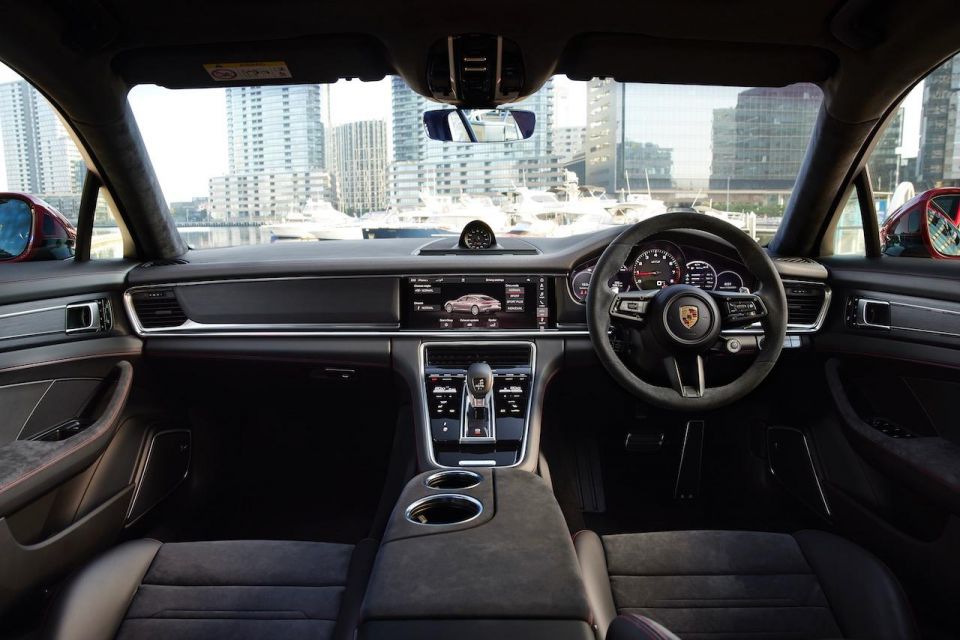
The entire cabin is covered head-to-toe in black Alcantara and soft leather accents with red ‘GTS’ embroidery for an overtly sporty, luxurious look and feel.
Even the steering wheel is covered in the stuff, but the GTS gets black anodised spokes and looks similar to that of the 911 Turbo we drove on the same launch; perfectly round, compact, and with ideal rim thickness.
Behind the wheel is a mostly digital rendition of Porsche’s trademark five-binnacle instrument cluster with only the centrally-mounted tachometer in analogue form.

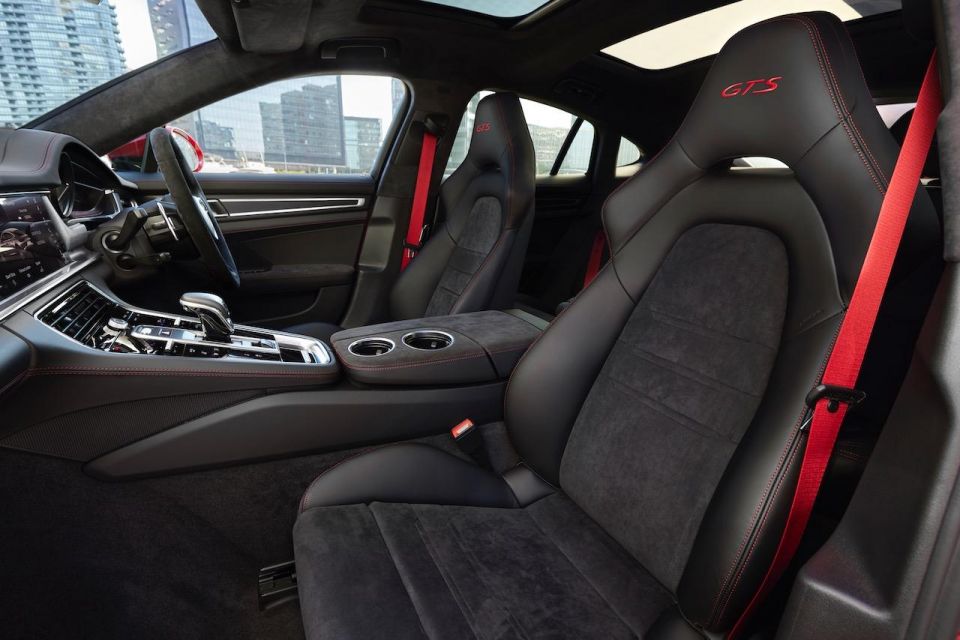


To the left is a large infotainment touchscreen that controls most functions including Apple CarPlay. It’s also perfectly placed and integrated into the dashboard facing.
Overall the switchgear has mostly been replaced by touch buttons, save for a few beautifully knurled rocker switches for the temperature and volume controls.
The seat position and design is brilliant, with bolsters that hold you steadfast in the bends but don’t encroach on your overall comfort. In effect there are four individual seats so regardless of where you’re sitting, it’s still a salubrious space.

New Panamera also sees the switch from USB-A to USB-C ports for front and rear seats along with a 12V socket in the centre console bin.
At more than five metres long, the Panamera offers plenty space for both rows, with extensive rear legroom, although taller frames might find headroom a tad snug back there.
The auto tailgate lifts to reveal a spacious 467 litres, expanding to 1306 litres with the rear seats folded flat.
If you’re wanting a closer look at the interior, you can head over to the Porsche website and use their 360° Experience on each model.

That would be a 4.0-litre twin-turbo V8, making a beefy 353kW (up 15kW) of power at 6500rpm and 620Nm of torque from between 1800 and 4000rpm. It’s delivered to all four wheels through an eight-speed dual-clutch transmission.
Importantly, the torque curve is now flatter in the GTS at higher engine speeds beyond even 5500rpm, while acceleration from 0-100km/h drops by 0.2 seconds to 3.9 seconds.
Top speed is 300km/h.

If you’re like me and never really bonded with the Panamera, you’re going to need to forget any preconceptions. This is a Porsche almost totally devoid of flaws.
Simply firing up the twin-turbo V8 is a treat for the senses. It’s an angry, race car-like engine note on the one hand, but it’s also free revving and refined.
It soon settles into a moderate-tempo idle. It’s obviously different in character to a 911, but no less enthralling.
If there was ever a blueprint for perfectly calibrated steering in a four-door GT you need to go no further than the Panamera GTS. Direct, accurate and fast, but not overly so, it’s perfectly weighted for fine mid-corner corrections.

This is a car that feels a size smaller than its dimensions and goes precisely where you point it, regardless of the conditions. It’s rock solid when you’re pushing. There are very few turns to lock-to-lock and very little arm twirling.
No car of this size should be able to string together a series of bends in the way the Panamera GTS can. There’s a 911 Turbo up front and he’s not holding back, but I’m staying with him every metre of the way with ridiculous ease.
That’s partly down to the optional rear-axle steering ($3750) on our tester and the minimal steering inputs required, which make the big Panamera seem so ridiculously nimble. The chassis itself is unmatched in the sports sedan class.
Better still, in Sport there’s plenty of pops and crackles as you lift into a corner. I haven’t driven the Turbo S version yet but, while it’s bound to quicker, I can’t imagine it being as fun to pilot as the GTS.
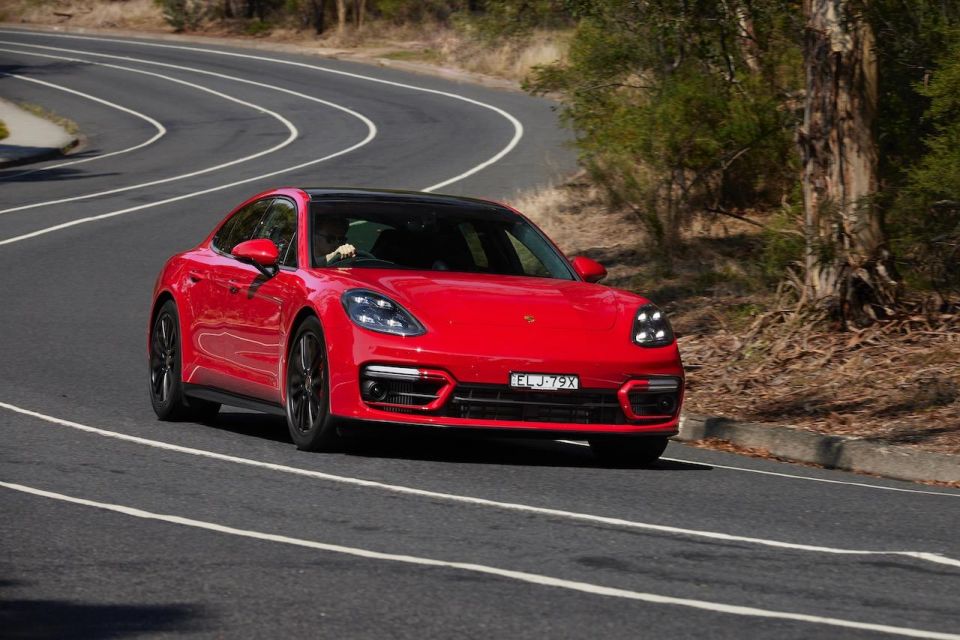
Where expert car reviews meet expert car buying – CarExpert gives you trusted advice, personalised service and real savings on your next new car.
It’s got more than enough grunt to stay with pretty much anything in the segment with sheer cornering performance. It’s pure magic and pure Porsche at the same time.
Stopping power is extraordinary. It’s the combination of brake pedal feel and progression; you can put the smallest bit of brake on to settle the car before an all-out assault on the Adelaide Hills and the car doesn’t miss a beat.
It’s more capable that anything I’ve ever driven of this size and feels entirely track capable, and yet there’s no sense of the slightest fade.
There’s a wee bit of lag from twin-turbo V8 below 2000rpm (it’s fractional), but above that boost is totally seamless. The tiniest increments of throttle are possible – and then you push the pedal a little harder – because the car is communicating with you.

It feels more like a naturally-aspirated car at this point and so well tied down.
The chassis balance is near perfect and the car is reassuringly neutral, regardless of how quick your steering inputs are through the really twisty stuff – it’s asking you to push on and there’s no discernible penalty, only a bigger smile on your face.
Crazy as it may seem in these deserted Adelaide Hills, not once did I feel the need to dial up Sport Plus.
Sport is just right when combined with the manual-only shift mode the paddle-shifters. Downshifting three gears sounds more like automatic rifle fire. Long live PDK.
If you are interested in getting into the driver’s seat, you can organise a test drive via the Porsche website. Or reach out to your local Porsche dealer to arrange one.

Porsche provides a three-year, unlimited-kilometre warranty on the Panamera GTS, along with a three-year paint coverage.
Service intervals are 12 months or 15,000km, whichever comes first, with service charges set by individual Porsche dealers.
Porsche claims a combined fuel consumption between 10.9L and 10.7 litres per 100km.

If this is a mid-life facelift, I can’t wait for the next Porsche Panamera.
I’ve never driven a more capable four-door sports sedan . There are, of course, faster outright rivals to the GTS – but that’s not what it’s about.
With this car, Porsche has taken a holistic approach to performance and given us a sedan that shouldn’t be able to obliterate a series of corners on rubbish roads the way it does.
This is close to engineering perfection.
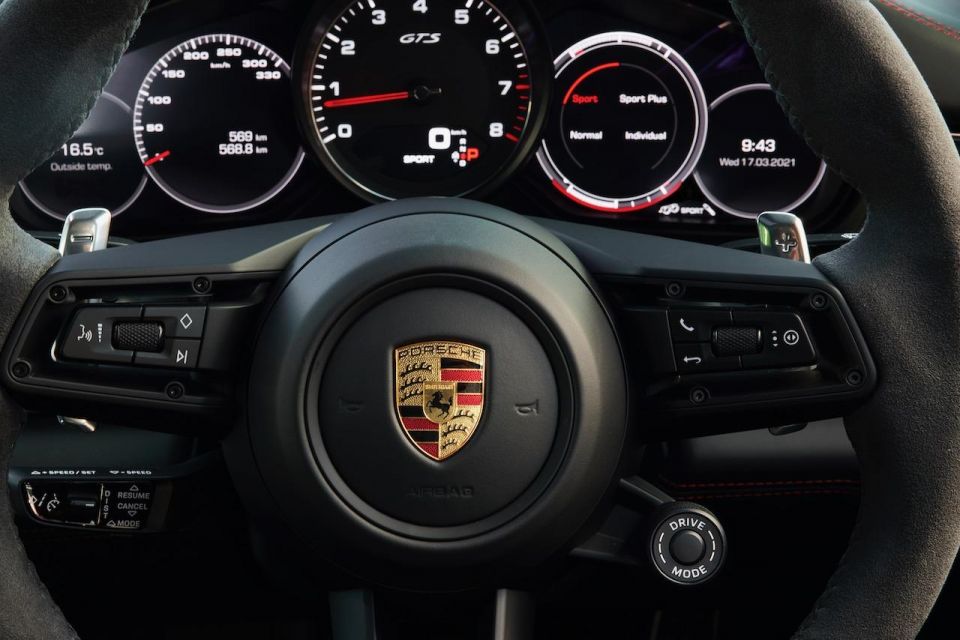
Click the images for the full gallery
MORE: Porsche Panamera news, reviews, comparisons and videos
Where expert car reviews meet expert car buying – CarExpert gives you trusted advice, personalised service and real savings on your next new car.


Matt Campbell
5 Days Ago


James Wong
4 Days Ago


Max Davies
3 Days Ago


Josh Nevett
2 Days Ago


Josh Nevett
1 Day Ago


James Wong
18 Hours Ago